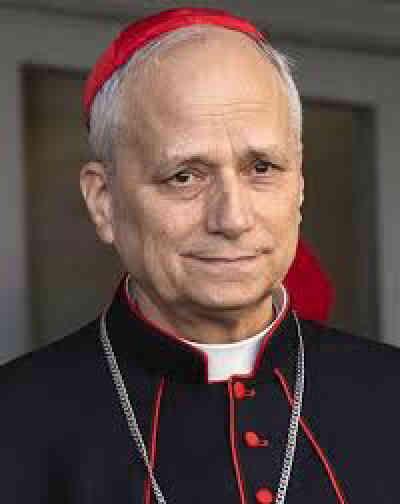Pope Leo XIV Biography: The First American Pontiff – From Chicago Streets to the Throne of Peter
Vatican City, May 9, 2025 – The Roman Catholic Church turned a historic page with the election of Robert Francis Prevost as the 266th pope, assuming the name Pope Leo XIV. The election not only marks the first time an American has ascended the papacy but also signals a transformative vision for a Church facing global challenges.
This authoritative biography outlines the life, ministry, election, and pontifical vision of Pope Leo XIV, blending verified ecclesiastical history with a grounded portrayal of a man shaped by missionary zeal, intellectual depth, and pastoral compassion.
Early Life and Education
Born on September 15, 1955, in Chicago, Illinois, Robert Francis Prevost was raised in a working-class Italian-American Catholic family. His father worked in a factory, while his mother was a public schoolteacher. Their deep Catholic faith instilled in him values of humility, community, and service.
In 1975, Prevost entered the Order of Saint Augustine (OSA), drawn by its emphasis on intellectual formation, communal living, and service to the marginalized. After completing his seminary education, he was ordained a priest in 1981.
He later pursued advanced studies in Rome, earning a Doctorate in Canon Law from the Pontifical University of St. Thomas Aquinas (Angelicum), one of the premier ecclesiastical institutions of the Catholic Church.
Missionary Work in Peru (1990–2014)
In 1990, Fr. Prevost embarked on a 24-year missionary journey to Peru, where he ministered among indigenous and impoverished Andean and Amazonian communities. There, he became fluent in both Spanish and Quechua, integrating deeply with the local population.
His contributions included:
- Advocating for land rights and environmental protection for indigenous peoples.
- Establishing educational programs and youth outreach centers in rural parishes.
- Championing social justice causes such as access to clean water, healthcare, and legal support for vulnerable populations.
His efforts earned him a reputation as a compassionate pastor with a fearless commitment to the marginalized.
In 2014, Pope Francis appointed him Bishop of Chiclayo, a diocese in northwestern Peru. As bishop, he:
- Combated corruption and fostered interfaith cooperation.
- Expanded diocesan programs targeting malnutrition, domestic abuse, and youth unemployment.
- Promoted pastoral inclusiveness while defending Catholic orthodoxy.
Rise in the Roman Curia (2023–2025)
In 2023, Pope Francis brought Prevost back to Rome, appointing him Prefect of the Dicastery for Bishops, the powerful Vatican department responsible for the appointment and oversight of bishops worldwide.
As Prefect, he:
- Advocated for appointing bishops based on pastoral integrity over political leanings.
- Introduced greater transparency in selection processes.
- Supported synodality, encouraging collaborative governance among bishops, clergy, and laypeople.
- Pushed for stronger clergy accountability and structural reform within dioceses.
His quiet but effective leadership gained him support across ecclesiastical factions, preparing the way for his papal candidacy.
Election as Pope (May 9, 2025)
The death of Pope Francis triggered a conclave marked by theological divisions between traditionalists and reformists. On the fifth ballot, Cardinal Robert Prevost emerged as a consensus choice, receiving 133 votes from the College of Cardinals.
He chose the papal name Leo XIV, in honor of Pope Leo XIII (1878–1903), the “Social Pope” best known for his landmark encyclical Rerum Novarum, which laid the groundwork for Catholic social teaching.
Symbolism of the Name:
- Leo XIII symbolized a Church responsive to the industrial working class and economic justice.
- By adopting the same name, Leo XIV signaled a return to missionary pastoralism, social equity, and dialogue with modernity.
Themes and Vision of His Pontificate
Pope Leo XIV enters the papacy with a focus on healing divisions and renewing the Church’s commitment to the poor and vulnerable. His theological stance can be described as Augustinian in intellect, Franciscan in humility, and Jesuit in global perspective.
Key Themes:
1. A Church for the Poor
- Expected to update Rerum Novarum for the modern economy, addressing issues such as gig labor, automation, and climate-induced poverty.
- May advocate debt forgiveness for developing nations and stronger international development aid.
2. Synodality and Reform
- Committed to expanding lay participation and the role of women in Church governance (though not in sacramental ordination).
- Advocates greater episcopal accountability, particularly on sexual abuse and financial transparency.
3. Interfaith and Ecumenical Dialogue
- Seeks stronger ties with Orthodox Churches, particularly regarding Eucharistic unity.
- Supports dialogue with Islam, Judaism, and Eastern religions, especially in humanitarian and climate issues.
4. Moral Leadership in Modern Times
- Likely to address AI ethics, climate change, bioethics, and digital privacy in encyclicals.
- Stands against both secular relativism and rigid moralism, promoting a pastoral approach rooted in Gospel values.
Geopolitical Significance
Pope Leo XIV’s American nationality brings both opportunities and challenges on the world stage.
Tensions and Expectations:
- U.S. bishops are divided between culture war traditionalists and social justice progressives—Leo XIV must act as a bridge.
- Latin America, where he served for decades, sees him as a champion of their struggles against inequality.
- Africa and Asia await his positions on LGBTQ+ inclusion, clergy celibacy, and religious freedom.
He will also inherit delicate diplomatic negotiations with:
- China over the appointment of bishops.
- Russia and Ukraine, where he may offer the Vatican as a neutral mediator.
- Middle Eastern states, where Christians remain persecuted minorities.
First Days and Personal Style
Pope Leo XIV has already made his tone clear.
First Apostolic Words:
“Fear not, little flock. With the humility of a missionary, I accept this cross. The Church must walk with the wounded, as Christ did.”
He continues to wear a simple wooden pectoral cross gifted by indigenous Peruvians and is expected to reject many papal luxuries in favor of pastoral presence.
His rumored first trip abroad may be to Peru (symbolizing continuity with his missionary past) or the U.S.-Mexico border (highlighting concern for migration and human dignity).
A Papacy of Bridge-Building and Renewal
Pope Leo XIV’s election represents a defining moment for a Church searching for moral clarity, institutional reform, and renewed missionary fervor.
He brings:
- The mind of a canonist,
- The heart of a missionary,
- And the vision of a reformer.
Whether addressing secularization in Europe, poverty in Latin America, or persecution in Asia, his pontificate may well be remembered as a turning point—where pastoral compassion met global realities, and where the Gospel reached the margins once more.






